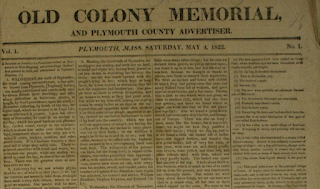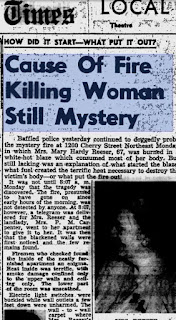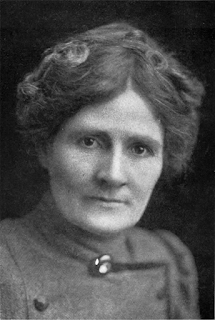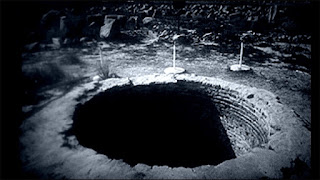The Vampire of Plymouth
“There are such beings as vampires,
some of us have evidence that they exist. Even had we not the proof
of our own unhappy experience, the teachings and the records of the
past give proof enough for sane peoples.” ~ Dr. Seward, Bram
Stokers Dracula.
Bram Stoker may have immortalized
vampires as creatures that prey on the necks of their victims, but
real vampires from folklore aren't so romanticized. In fact, they're
simply the walking dead. And one of these horrible creatures is said
to reside in Plymouth.
During the 1800's, pulmonary
tuberculosis would result in 1 out of 4 deaths. It was a bacterial
infection that destroyed the tissue in the lungs and could be
transmitted through the air from an infected individual either by
coughing or sneezing near the uninfected. However, to the early
settlers of New England, medicine and science had not even touched on
the origin of the disease or even come to understand what it was, how
it was caused or how one could prevent it. At this time, the disease
was at the time, known by its colloquial term as the Consumption, and
it manifested in different ways: there was the fast-acting kind that
could turn a healthy person into a corpse by a matter of weeks. Or
the slower-moving form of the disease that slowly wrung the life from
its victims over the course of many years. Entire families during
this time were wiped out as the affliction whittled its way through
household after household.
When medical science couldn't provide
answers, some families turned to the super natural. On May 4th,
1822, the Old Colony Memorial and Plymouth County Advertiser ran an
article called
“Superstitions of New England.” it Highlighted an
1807 vampire case of Plymouth and the folklore remedy that followed:
In that almost insulated part of
the state of Massachusetts, called Old Colony or Plymouth County, and
particularly in a small village adjoining the shire town, there may
be found the relics of many old customs and superstitions which would
be amusing, at least to the antiquary. Among others of less serious
cast, there was, fifteen years ago, one which, on account of its
peculiarity and its consequence, I beg leave to mention...
There was, fifteen years ago, and
is perhaps at this time, an opinion prevalent among the inhabitants
of this town, that the body of a person who died of the consumption,
was by some supernatural means, nourished in the grave of some one
living members of the family; and that during the life of this
person, the body remained, in the grave, all the fullness and
freshness of life and health.
This belief was strengthened by the
circumstance, that whole families frequently fell prey to this
terrible disease.
Of one large family in this town
consisting of fourteen children, and their venerable parents, the
mother and the youngest son only remained – the rest within a year
of each other had died of the consumption.
Within two months from the death of
the thirteenth child, an amiable girl of about 16 years of age, the
bloom, which characterized the whole of this family, was seen to fade
from the cheek of the last support of the heart-smitten mother.
At this time as if to snatch one of
this family from an early grave, it was resolved by a few of the
inhabitants of the village to test the truth of this tradition which
I have mentioned, and, which the circumstances of this afflicted
family seemed to confirm. I should have added that it was believed
that if the body thus supernaturally nourished in the grave, should
be raised and turned over in the coffin, its depredation upon the
survivor would necessarily cease. The consent of the mother being
obtained, it was agreed that four persons, attended by the surviving
and complaining brother should, at sunrise the next day dig up the
remains of the last buried sister. At the appointed hour they
attended in the burying yard and having with much exertion removed
the earth, they raised the coffin upon the ground. Then displacing
the flat lid, they lifted the covering from her face, and discovered
what they had indeed anticipated, but dreaded to declare. - “yes, I
saw the visage of one who had been long the tenant of a silent grave,
lit up with the brilliancy of youthful health, the cheek was full to
dimpling, and a rich profusion of hair shaded her cold forehead and
while some of its richest curls floated upon her unconscious breast.
The large blue eyes scarcely lost its brilliancy, and the livid
fullness of her lips seemed almost to say, 'lose me and let me go.'”
In two weeks the brother, shocked
with the spectacle he had witnessed, sunk under his disease. The
mother survived scarcely a year, and the long range of sixteen
graves, is pointed out to the stranger as an evidence of the truth of
the belief of the inhabitants.
Dr. Michael Bell's
book, Food for the Dead, he explores many of the vampire cases
throughout New England. The Plymouth case is unique. “One of the
interesting things about the Plymouth example; and its the only one I
found in New England, is that all they did was just turn the corpse
upside-down. Face down. And then rebury it. It shows just how dumb
vampires really are [he laughs].
Like its going to dig itself deeper into the ground and its never
going to get out.”
With the gentle
Plymouth treatment, somewhere a vampire still rests intact, though
face-down in her grave, alongside fifteen others from her immediate
family.





Comments
Post a Comment